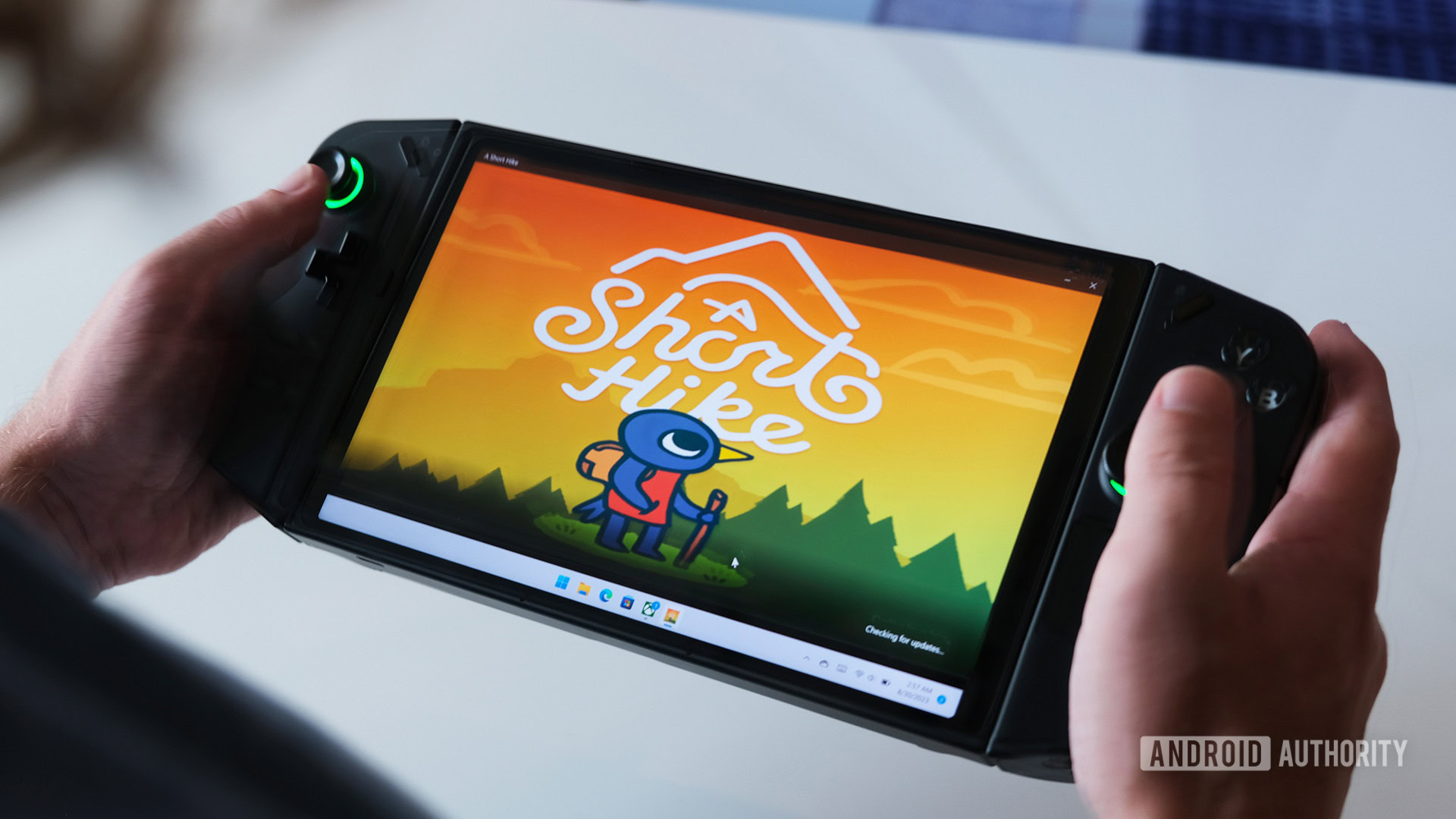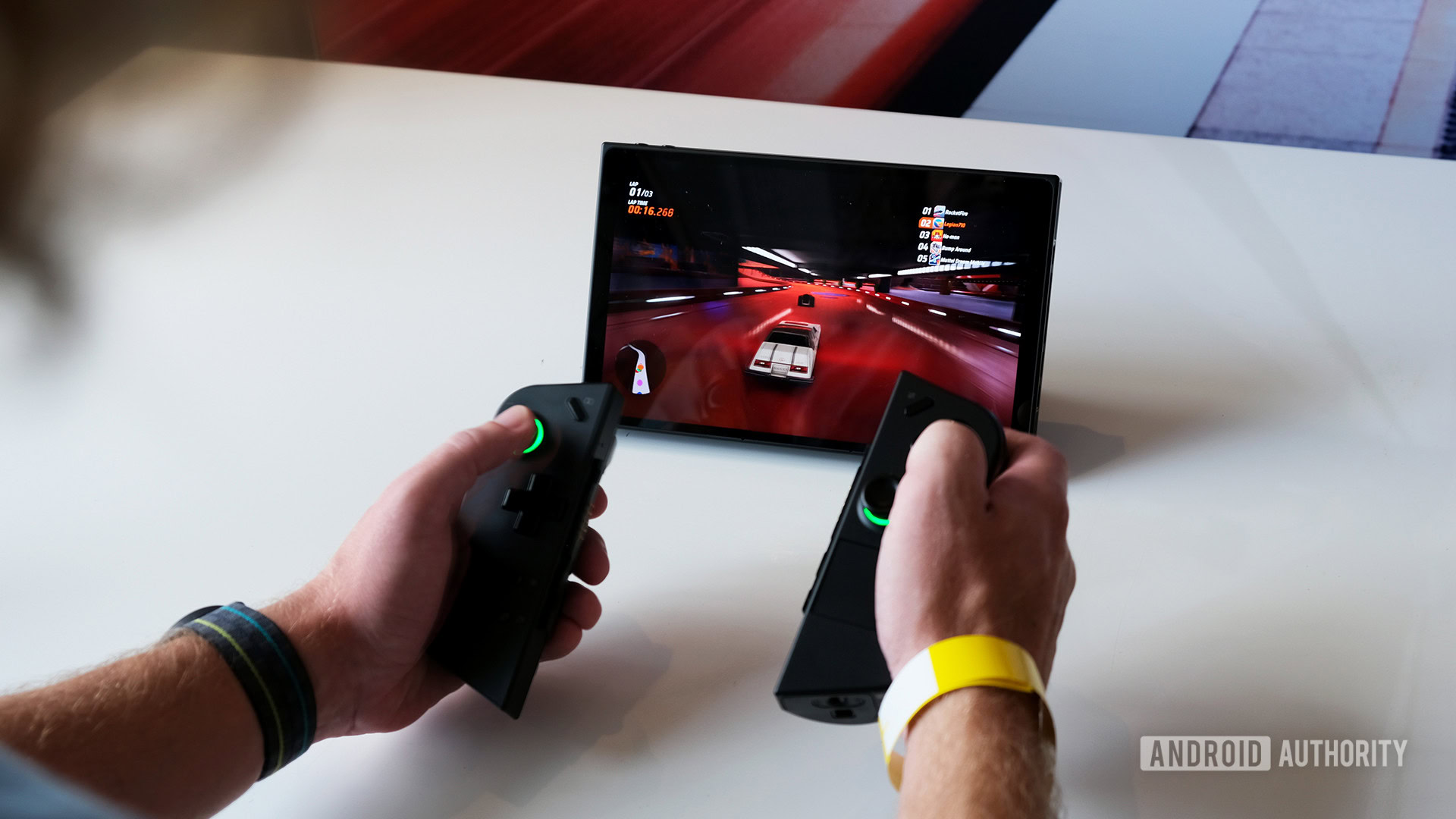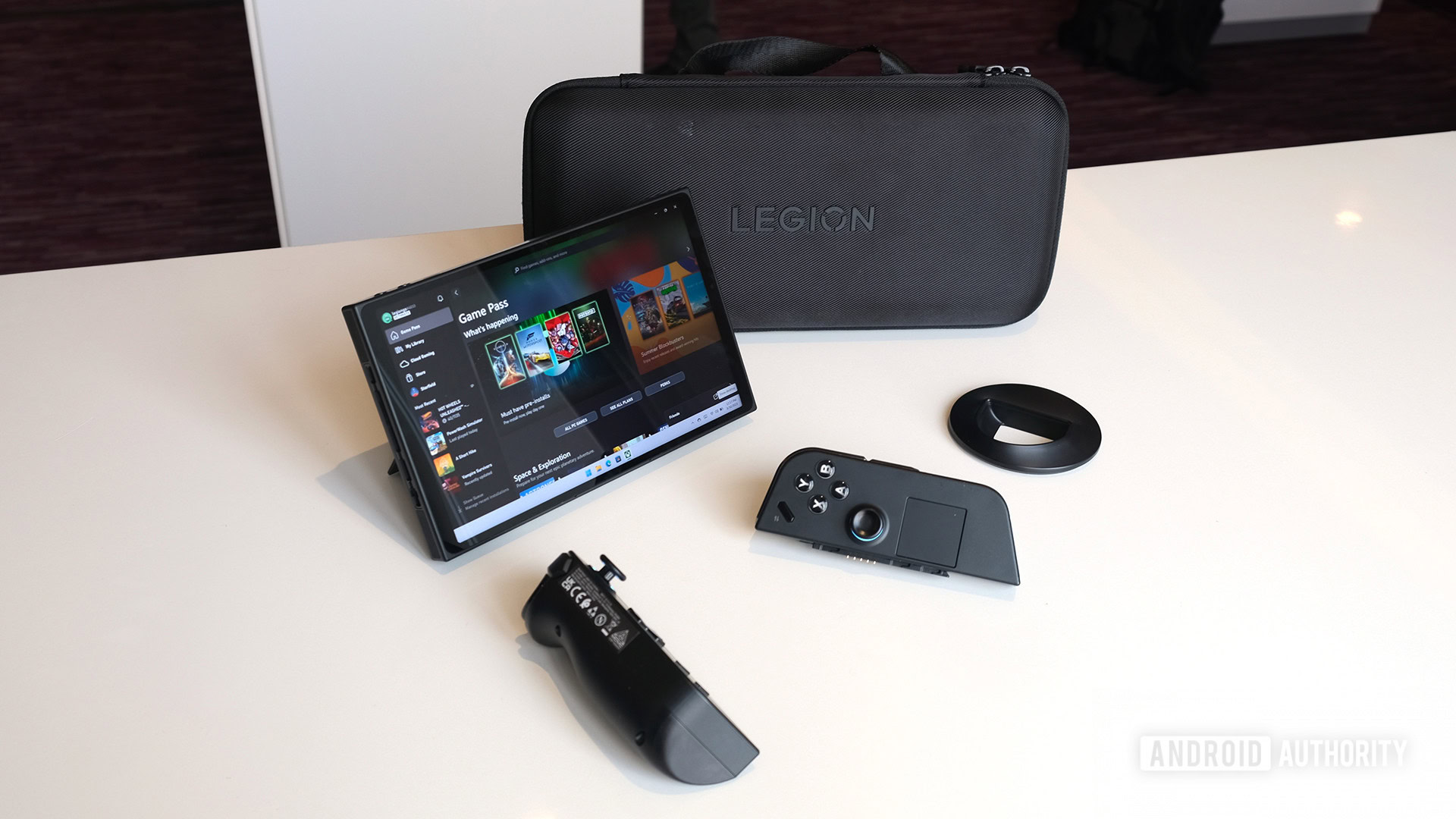
C. Scott Brown / Android Authority
Handheld gaming devices are as popular as ever — all you have to do is choose your operating system. We’ve already seen an Android option in Razer’s Edge 5G, Windows handhelds like the ASUS ROG Ally, Valve’s Linux-based Steam Deck, and the classic Nintendo Switch. Now, Lenovo is throwing its hat in the proverbial ring with its own Windows-powered offering. The Legion Go pulls key features from its closest rivals, and we got a chance to go hands-on during IFA 2023. Here’s what we thought of the new gaming slate.
High-powered hardware

C. Scott Brown / Android Authority
On paper, the Lenovo Legion Go is equipped to run laps around its handheld rivals. It matches the ROG Ally with up to AMD’s Ryzen Z1 Extreme processor and 16GB of RAM but offers far more storage with up to 1TB onboard. The Ryzen Z1 Extreme beats the Steam Deck’s aging custom “Van Gogh” Zen 2 processor, too. Mix in that the Steam Deck starts with just 64GB of storage on the base model, and it falls even further behind. However, Lenovo’s advantages aren’t limited to what’s under the hood.
The shining star of the new gaming setup is the Legion Go’s 8.8-inch OLED touchscreen that dwarfs both the ROG Ally and the Steam Deck with their 7-inch panels. Lenovo’s display is the sharpest of the three, offering a QHD (2,560 x 1,600) resolution compared to ASUS’ FHD (1,920 x 1,080) quality and the Steam Deck’s relatively modest 1,280 x 800 panel. Finish it off with a crisp 144Hz refresh rate, and the Legion Go isn’t missing much at all.
Bigger, faster, sharper — the Legion Go doesn’t skimp on its specs.
That said, if there’s one drawback to Lenovo’s “more is better” approach, its Legion Go isn’t the lightest handheld. It weighs in at a whopping (and I do mean whopping) 850g with the controllers attached or nearly 650g with them removed. That’s about 30g more than the ROG Ally, even without the controllers, and almost 180g heavier than the Steam Deck with controllers attached. We only had a short time to play with the Legion Go, but you may need a hearty bowl of Wheaties each morning to make it your primary portable gaming device.
Thankfully, you don’t have to hold the Legion Go all day long if you don’t want to — there’s a kickstand. You can pop the bottom half of the rear panel out as an adjustable (and fairly solid) stand so you can let your desk or seat-back table do the heavy lifting. Of course, the kickstand works best with the controllers detached, so let’s address the Legion Go as a Nintendo Switch competitor.
More Switch than Steam Deck

C. Scott Brown / Android Authority
I didn’t realize how much I wanted a Windows gaming handheld with removable controllers until I tried the Lenovo Legion Go. Where the ROG Ally and Steam Deck are closer to Nintendo’s Switch Lite with built-in controllers, the Legion Go’s removable TrueStrike controllers slide in and out just like Nintendo’s JoyCons. Lenovo’s controllers are slightly thicker than those on the Switch, but they’re slightly more ergonomic, too, with a comfortable bulge at the top around the trigger setups. It’s somewhat tricky to get the controllers off at first due to the button placement on the bottom, but it becomes second nature after a few minutes of practice.
As for the controller layouts themselves, Lenovo went with a healthy mix of the Steam Deck and ASUS ROG Ally for inspiration. There’s a joystick on both sides, while the left controller has a flat D-pad, and the right has A, B, X, and Y buttons and a small laptop-like trackpad (this is a Windows device, after all). Once you’re ready to customize your layout, the Legion TrueStrike controllers have 10 shoulder buttons.
Lenovo’s JoyCon-like controllers are far more flexible than those of the Steam Deck or ROG Ally.
Of course, not all games rely on controller-friendly layouts. If you’re more comfortable with a WASD layout and prefer to aim with a mouse on a Lenovo Legion laptop, the Legion Go has a trick for that, too. Each gaming handheld comes with a small plastic ring that can hold the base of the right TrueStrike controller for what Lenovo calls FPS mode. It essentially turns that right side into a computer mouse (complete with a scroll wheel) to control your direction while the left controller handles your movement.
Unfortunately, swapping between controller setups can be confusing if you’re a casual gamer like me. You might get used to one setup with the TrueStrike controllers attached, only to switch to FPS mode and find that your A-button is now an R-button, and the button that used to make you jump now makes you bail out of a moving vehicle. I’m sure I could get used to the revolving door of layouts given more time, but our half-hour demo wasn’t enough.
Lenovo Legion Go specs
| Lenovo Legion Go | |
|---|---|
|
Display |
8.8-inch IPS |
|
Processor |
Up to AMD Ryzen Z1 Extreme |
|
RAM |
16GB LPDDR5X |
|
Storage |
256GB/512GB/1TB PCle 4.0 |
|
Connectivity |
5G/LTE |
|
Audio |
2x 2W Speakers |
|
Software |
Windows 11 Home |
|
Power |
2-cell 49WHr |
|
Dimensions / weight |
With controllers: 299 x 131 x 41mm (854g) |
Lenovo Legion Go: Hands-on impressions

C. Scott Brown / Android Authority
The early bird might get the worm, but the Lenovo Legion Go is a classic case of the second mouse getting the cheese. Lenovo didn’t rush its launch, and it might have come up with the most flexible handheld of the lot now that it’s shifted away from Legion-branded phones. Sure, it’s on the heavy side, and the internal fans get very, very loud when they spin up, but the Switch-like flexibility pushes the Legion Go comfortably above the ROG Ally and Steam Deck in terms of versatility. How I feel about those fans after an hour or two instead of just 20 minutes might change my tune, and I’ve yet to see how the high-powered components impact long-term battery performance.
What I can say for now is that the Legion Go is perfectly capable both with the controllers attached and with them removed Nintendo Switch-style. I dipped into Hot Wheels Unleashed for a few races with the controllers attached, and the overall size was reminiscent of using a steering wheel. Thankfully, the game uses almost identical controls to Mario Kart, so I could pick up and play with virtually no help from Lenovo’s team.
I also detached the Legion TrueStrike controllers to try FPS mode in PowerWash Simulator — another classic for casuals like me. The Legion Go had no problems swapping to a new controller layout, with the mouse wheel taking control over changing the washer attachment and the left shoulder buttons taking over jumping and crouching in place of the A, B, X, and Y buttons. It’s a bit tricky to have a free-floating controller in one hand and a mouse-bound one in the other, as I found I often wanted to pick them both up like VR remotes.
As a Wind0ws-powered gaming device, the Legion Go ships with Windows 11 Home onboard. However, navigating the tiny interface is difficult, especially if you have larger fingers. I found myself using the small trackpad most of the time, though you have to swipe across it more than once to get your cursor from one side of the display to the other. It might be blasphemy, but I think the Legion Go would benefit from an interface closer to the Xbox Series X or, dare I say, a Windows Phone.
Is the Lenovo Legion Go worth buying?
8 votes
At the end of the day, interfaces can be tweaked, and controller layouts can be fine-tuned, but the Legion Go’s flexibility sets it apart. Whether you want to play with your controllers attached, with your Legion Go sitting on your desk, or even with it connected to your TV using DisplayPort 1.4, you can do so with your choice of gaming libraries, including Xbox Game Pass, Epic Games, Steam. Lenovo’s flexibility comes at a cost ($699 for the base model), but it’s shaping up to be a price worth paying.



